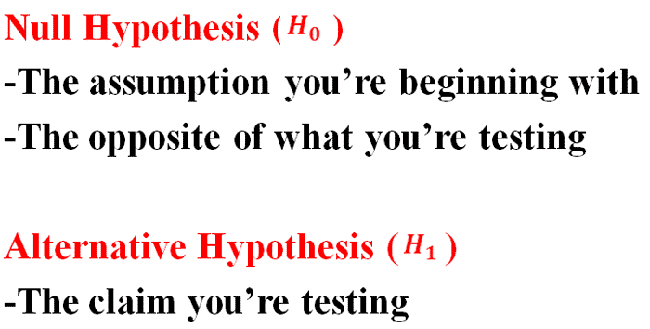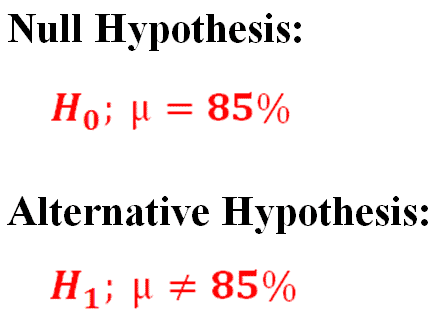Here's an example: School District A states that its high schools have an 85% passage rate on the High School Exit Exam. A new school was recently opened in the district, and it was found that a sample of 150 students had a passage rate of 88%, with a standard deviation of 4%. Does this new school have a different passage rate than the rest of School District A?
When we do hypothesis testing, what we’re really doing is testing claims.
For this question, we’re testing the claim that students at the new school have a passage rate that is different than the expected 85%.

|
Figure 1. |
|---|
We’re going to try to find evidence which shows the null hypothesis to be false. If this evidence exists, we can reject the null hypothesis and say that the alternative hypothesis is true. If we cannot find this evidence, we will continue with the assumption that the null hypothesis is true. For this example:

|
Figure 2. |
|---|